Introducing the luscious and dairy-free indulgence of Coconut Whipped Cream—a delightful alternative that’s perfect for those seeking a lighter, tropical-infused topping for their favorite treats. This velvety concoction is made from the rich and creamy coconut cream extracted from coconut milk, creating a silky-smooth texture and a subtly sweet coconut flavor. With its airy consistency and dreamy essence, Coconut Whipped Cream complements a range of desserts, from fresh fruit bowls and decadent cakes to warm beverages and chilled puddings. Whether you’re aiming for a vegan-friendly option or simply looking to add a touch of the tropics to your treats, Coconut Whipped Cream promises a delectable and tropical twist that’s bound to captivate both your palate and your imagination.
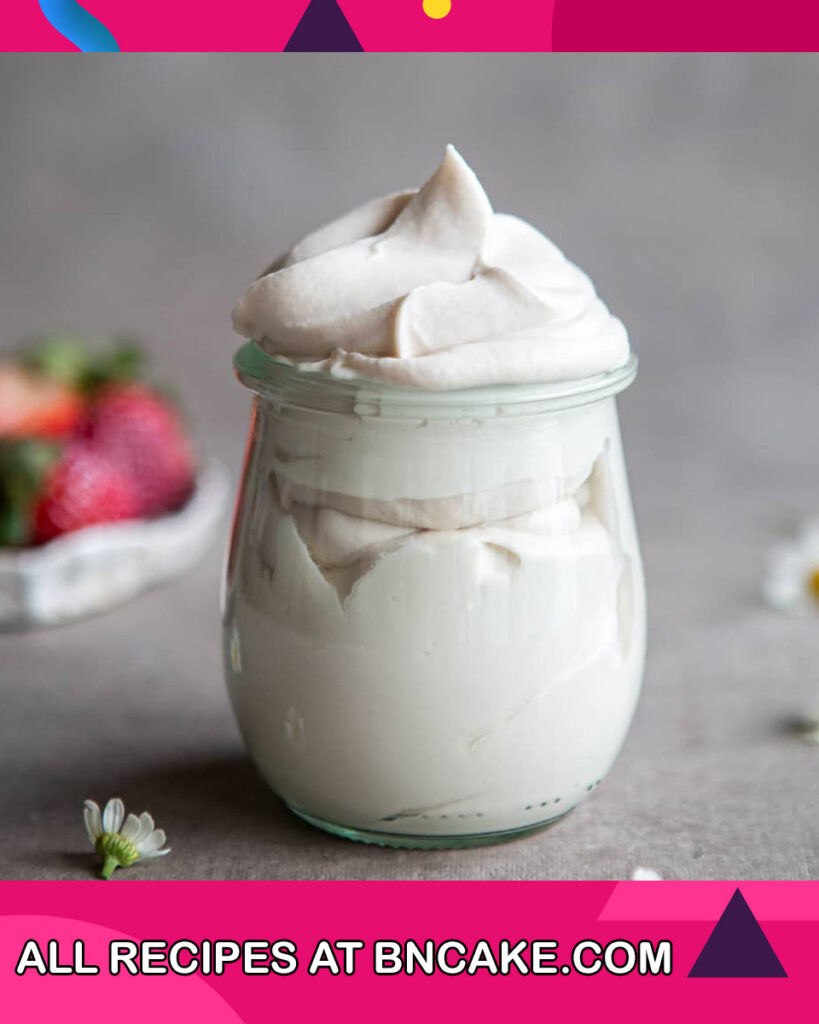
What Is Coconut Whipped Cream?
Coconut Whipped Cream is a dairy-free alternative to traditional whipped cream that is made using coconut milk or coconut cream. It offers a creamy and velvety texture with a subtly sweet coconut flavor, making it a popular choice for those who are lactose intolerant, vegan, or simply looking to explore new flavors.
To make Coconut Whipped Cream, you typically refrigerate a can of full-fat coconut milk or use canned coconut cream. The coconut cream separates from the liquid in the can when chilled. The solid coconut cream is then whipped with a mixer until it reaches a light and airy consistency similar to traditional whipped cream.
Coconut Whipped Cream can be used as a topping for various desserts, such as cakes, pies, fruit salads, ice cream, hot beverages like coffee or hot chocolate, and more. Its tropical and coconutty flavor adds a unique twist to both sweet and savory dishes, providing a creamy and indulgent touch without the use of dairy products.
Keep in mind that the quality of the final Coconut Whipped Cream depends on the type and brand of coconut milk or cream used. Some brands might yield a creamier texture and better separation of the coconut cream from the liquid. It’s also important to choose a brand that doesn’t contain additives that can interfere with the whipping process.

Why You Will Love Coconut Whipped Cream Recipe?
You’ll find plenty of reasons to love the Coconut Whipped Cream recipe, especially if you’re looking for a dairy-free alternative that offers a tropical twist to your desserts. Here’s why you’ll adore it:
- Dairy-Free Delight: If you’re lactose intolerant, vegan, or avoiding dairy, this recipe is a game-changer. It provides a luscious whipped cream experience without any dairy products.
- Tropical Flair: The subtle coconut flavor adds a touch of the tropics to your treats, elevating their taste and transporting you to a sunny paradise with each bite.
- Velvety Texture: Coconut Whipped Cream has a velvety and airy texture similar to traditional whipped cream, making it a delectable topping for various desserts.
- Simple Ingredients: The recipe requires minimal ingredients—typically just canned coconut milk or coconut cream and a sweetener of your choice—making it accessible and easy to prepare.
- Customizable Sweetness: You can adjust the sweetness to your liking by using different sweeteners such as powdered sugar, maple syrup, or agave nectar.
- Quick and Easy: Preparing Coconut Whipped Cream is a breeze. Once you have the ingredients ready, it only takes a few minutes to whip it up.
- Versatile Topping: This whipped cream pairs beautifully with a wide range of desserts, from fruit salads and pies to cakes and hot beverages.
- Impressive Presentation: The light and fluffy texture of Coconut Whipped Cream adds an elegant touch to your creations, enhancing both the taste and appearance of your desserts.
- Texture Contrast: The creamy texture of the whipped coconut cream provides a pleasant contrast to crispy or chewy dessert components.
- Healthier Option: Depending on the sweetener you use, you can make a healthier version of whipped cream with less refined sugars.
- Endless Creativity: Get creative by adding natural flavorings like vanilla extract, cocoa powder, or citrus zest to customize the taste of your Coconut Whipped Cream.
- Allergy-Friendly: Since Coconut Whipped Cream doesn’t contain dairy or gluten, it’s a great option for people with allergies or sensitivities.
Whether you’re exploring dairy-free options, experimenting with new flavors, or seeking a creamy topping that transports you to a tropical oasis, the Coconut Whipped Cream recipe has something for everyone to savor and enjoy.
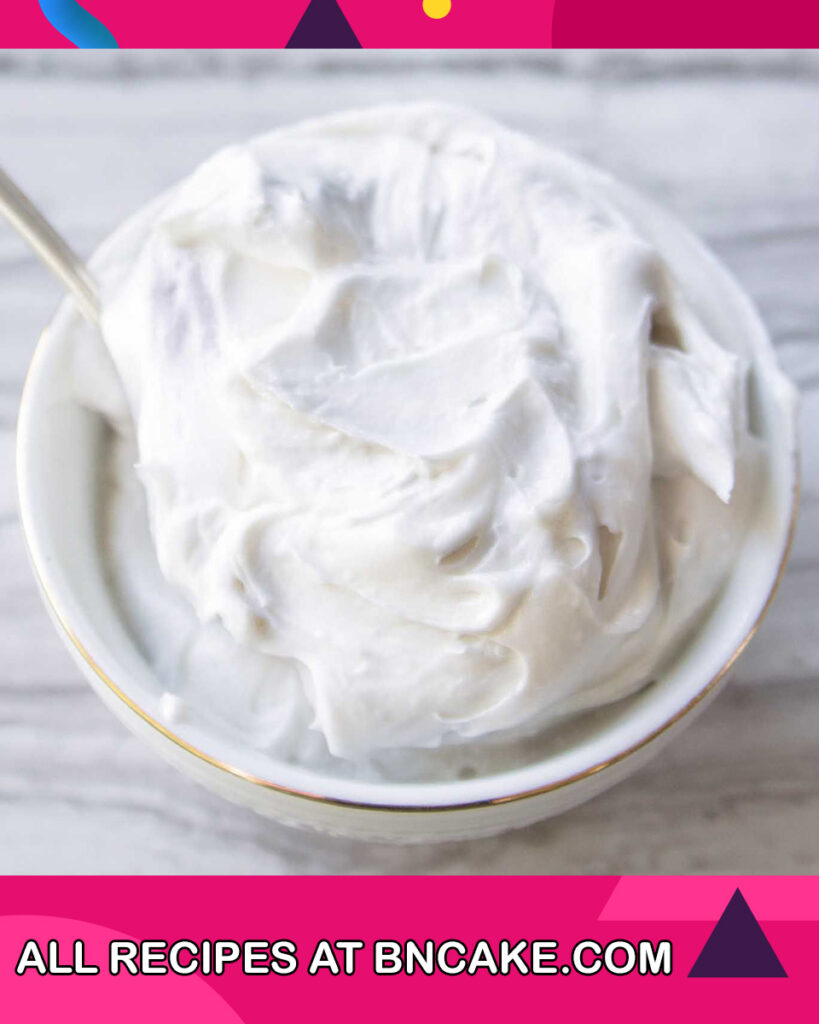
Ingredients For Coconut Whipped Cream
- 1 can (13.5 to 15 ounces) of full-fat coconut milk or coconut cream, chilled in the refrigerator for at least 8 hours or overnight
- 1-2 tablespoons sweetener of your choice, such as powdered sugar, maple syrup, agave nectar, or honey (adjust to taste)
- 1 teaspoon vanilla extract (optional, for flavor)
How To Make Coconut Whipped Cream
- Begin by placing the can of full-fat coconut milk or coconut cream in the refrigerator for at least 8 hours or overnight. This allows the coconut cream to solidify and separate from the liquid.
- Gently open the chilled can of coconut milk or cream without shaking it. Carefully scoop out the solidified coconut cream that has risen to the top of the can. Leave the liquid portion behind; you can save it for other recipes.
- Transfer the solidified coconut cream into a mixing bowl. If the cream is still a bit liquidy, you can drain any excess liquid.
- With a hand mixer or stand mixer, whip the coconut cream on medium-high speed. Whip until the cream becomes light and fluffy, achieving a texture similar to traditional whipped cream. This usually takes a few minutes of mixing.
- Gradually add your chosen sweetener, starting with 1 tablespoon. Mix the sweetener into the whipped coconut cream. Taste and adjust the sweetness to your preference. If needed, add another tablespoon of sweetener and mix again until well combined.
- If you desire extra flavor, you can add 1 teaspoon of vanilla extract to the whipped cream. Mix once more to ensure the vanilla is evenly incorporated.
- Your Coconut Whipped Cream is now ready to be used as a delectable dairy-free topping for a variety of desserts.
Remember, the quality of the coconut milk or cream, as well as the chosen sweetener, can affect the final outcome. Adjust the sweetener and flavorings according to your taste preferences for the perfect Coconut Whipped Cream that suits your dessert creations.

How To Serve Coconut Whipped Cream
Serving Coconut Whipped Cream is a delightful way to enhance the flavor and presentation of your desserts. Here’s how to serve it:
Topping Cakes and Cupcakes:
- Dollop a generous spoonful of Coconut Whipped Cream onto the center of cakes or cupcakes. You can also create a border of whipped cream around the edges for an elegant touch.
Fruit Salads:
- Add a dollop or drizzle of Coconut Whipped Cream over fresh fruit salads to provide a tropical flair. It pairs wonderfully with berries, tropical fruits, and more.
Pies and Tarts:
- Top your favorite fruit pies or tarts with Coconut Whipped Cream for a creamy contrast to the fruity filling.
Ice Cream Sundaes:
- Transform a scoop of your favorite dairy-free ice cream into a sundae by adding a swirl of Coconut Whipped Cream on top. Add sprinkles, nuts, or a cherry for extra fun.
Hot Beverages:
- Float a dollop of Coconut Whipped Cream on hot beverages like hot chocolate, coffee, or chai latte. It adds a rich and creamy layer that’s both soothing and indulgent.
Pancakes and Waffles:
- Serve Coconut Whipped Cream alongside pancakes, waffles, or French toast for a unique twist. It’s a fantastic substitute for traditional whipped cream.
Dessert Dips:
- Present Coconut Whipped Cream as a dip for fresh fruit, cookies, or pieces of cake. Guests can dip their favorite treats for a personalized experience.
Parfaits and Dessert Jars:
- Layer Coconut Whipped Cream with granola, fruit, and other dessert components to create visually appealing parfaits or dessert jars.
Mousse and Puddings:
- Top dairy-free mousses and puddings with a dollop of Coconut Whipped Cream to add creaminess and flavor.
- Tropical Dessert Creations:
- Incorporate Coconut Whipped Cream into desserts inspired by tropical flavors, such as mango, pineapple, or passion fruit.
- Garnishing and Decoration:
- Use Coconut Whipped Cream to garnish and decorate your desserts. You can create swirls, rosettes, or artistic patterns to enhance their visual appeal.
- Customization:
- Experiment with serving Coconut Whipped Cream in unique and creative ways to complement the flavors and textures of your dishes.
Whether you’re enjoying it as a classic topping or getting imaginative with its use, Coconut Whipped Cream adds a luxurious, dairy-free touch to your desserts that’s both visually stunning and irresistibly delicious.
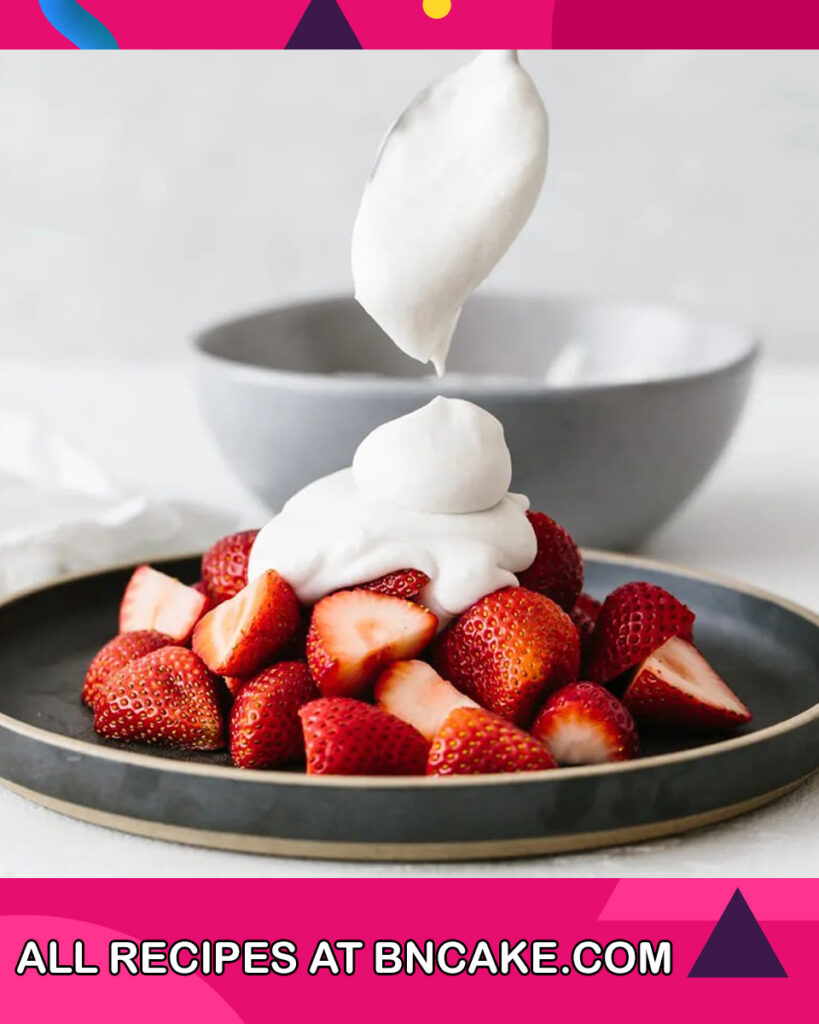
How To Store Coconut Whipped Cream
Storing Coconut Whipped Cream properly ensures that it retains its texture and flavor for future use. Here’s how to store Coconut Whipped Cream:
Short-Term Storage (1-2 Days):
If you plan to use Coconut Whipped Cream within a day or two, you can store it in the refrigerator. Follow these steps:
- Air-Tight Container: Transfer the whipped cream to an airtight container.
- Cover Surface: Press a piece of plastic wrap directly onto the surface of the whipped cream before sealing the container. This helps prevent the top layer from drying out or forming a skin.
- Refrigeration: Store the container in the refrigerator. Place it in a cool area, away from strong-smelling foods.
Note: Coconut Whipped Cream can become denser when refrigerated. When you’re ready to use it again, you might need to gently rewhip it to restore its fluffy texture.
Long-Term Storage (1-2 Months):
If you want to store Coconut Whipped Cream for an extended period, consider freezing it. Here’s how:
- Portion and Wrap: Divide the whipped cream into smaller portions that you’ll use at once. You can use silicone ice cube trays or portion them onto a parchment paper-lined baking sheet.
- Freezing: Place the portioned whipped cream in the freezer until they’re solid. Once frozen, transfer them to a resealable freezer-safe plastic bag.
- Label and Date: Label the bag with the date to help you keep track of its freshness.
Thawing and Reusing Frozen Whipped Cream:
- Thaw Gradually: To use frozen Coconut Whipped Cream, transfer the desired portion from the freezer to the refrigerator. Allow it to thaw gradually over several hours or overnight.
- Re-Whip: After thawing, the texture may have changed. Gently rewhip the thawed Coconut Whipped Cream using a hand mixer or stand mixer until it regains its fluffy consistency.
Note: While freezing Coconut Whipped Cream is possible, it might not maintain the exact same texture after thawing. It’s best to use frozen whipped cream for applications where the texture is not as critical, such as in cold beverages or less intricate dessert decorations.
By following these storage methods, you can enjoy the convenience of having Coconut Whipped Cream on hand whenever you need to add a dairy-free, tropical touch to your desserts and beverages.
Other Delicious Dessert Recipes To Try
Tips And Tricks For Coconut Whipped Cream
Here are some valuable tips and tricks to help you master the art of making and using Coconut Whipped Cream:
Ingredients and Preparation:
- Choose the Right Coconut Milk or Cream: Opt for full-fat coconut milk or coconut cream that separates well when chilled. Avoid brands with stabilizers or emulsifiers, as they can affect the whipping process.
- Chill Thoroughly: Ensure that the can of coconut milk or cream is thoroughly chilled in the refrigerator. This encourages the separation of the cream from the liquid.
Whipping Process:
- Whipping Bowl and Tools: Use a chilled mixing bowl and beaters for best results. Place them in the refrigerator for a short while before whipping to ensure they’re cold.
- Whip to the Right Consistency: Whip the coconut cream until it reaches a light and fluffy consistency similar to traditional whipped cream. Be patient; it might take a few minutes.
- Avoid Over-Whipping: Be careful not to over-whip the cream, as it can turn grainy or separate. Stop whipping as soon as you achieve a smooth and airy texture.
Sweeteners and Flavorings:
- Customize Sweetness: Start with a smaller amount of sweetener and adjust to taste. Remember that the coconut cream itself has natural sweetness.
- Add Flavorings: Experiment with different flavorings like vanilla extract, almond extract, or citrus zest to enhance the taste.
Consistency and Use:
- Texture Maintenance: If Coconut Whipped Cream becomes too firm after refrigeration, gently rewhip it to restore its fluffy texture.
- Gentle Mixing: When incorporating flavorings or sweeteners, mix gently to avoid deflating the whipped cream.
Application:
- Layering Technique: When layering with desserts, pipe or spoon Coconut Whipped Cream between layers for an even distribution.
- Dipping: Serve Coconut Whipped Cream as a dip for fresh fruit, cookies, or other treats for a fun and interactive dessert experience.
- Serving Temperature: Serve Coconut Whipped Cream chilled for the best texture. It pairs well with both warm and cold desserts.
Creativity and Presentation:
- Decorative Piping: Use piping bags and different nozzles to create decorative designs when applying the whipped cream to desserts.
- Garnishing: Top Coconut Whipped Cream with toasted coconut flakes, chopped nuts, fruit slices, or a sprinkle of cocoa powder for added visual appeal.
- Stabilization: If you plan to use Coconut Whipped Cream for dessert decorations that require stability, consider using a stabilizer like tapioca starch or powdered sugar to help maintain shape.
With these tips and tricks, you can master the art of creating smooth, airy, and delicious Coconut Whipped Cream that adds a delightful tropical touch to your culinary creations.
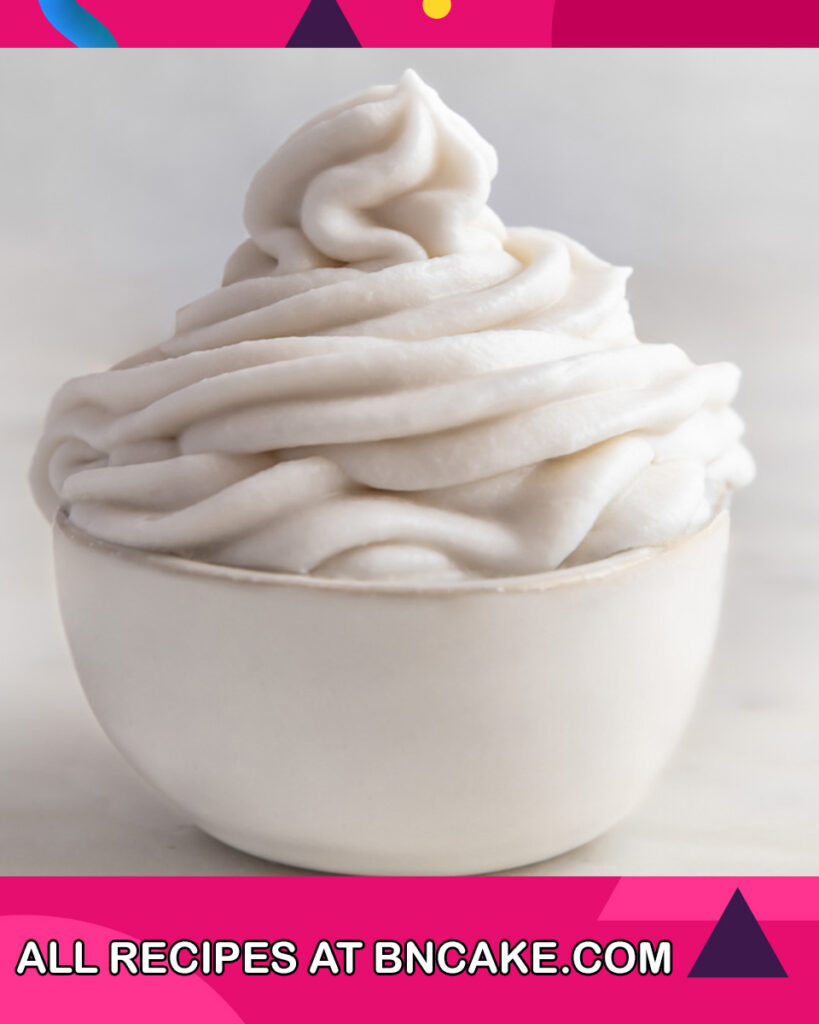
FAQs And Troubleshooting
FAQs:
1. Can I use light coconut milk for Coconut Whipped Cream?
- It’s recommended to use full-fat coconut milk or coconut cream for the best results. Light coconut milk has a lower fat content and may not whip as well.
2. Why didn’t my Coconut Whipped Cream whip properly?
- The brand and quality of coconut milk or cream can affect the whipping process. Look for brands without additives or emulsifiers. Also, ensure that the cream and mixing tools are cold.
3. Can I make Coconut Whipped Cream in advance?
- While it’s best to make Coconut Whipped Cream just before serving, you can prepare it a few hours in advance and store it in the refrigerator. You may need to rewhip it gently before using.
4. My Coconut Whipped Cream turned out too runny. What should I do?
- If the whipped cream is too runny, it might be due to excess liquid in the can. Drain off excess liquid or try using a different brand of coconut milk or cream with a higher fat content.
5. Can I use sweetened coconut cream for Coconut Whipped Cream?
- Sweetened coconut cream can be used, but be cautious about the added sweetness. Adjust your sweetener accordingly.
6. Can I flavor Coconut Whipped Cream with cocoa powder or other ingredients?
- Yes, you can add flavorings like cocoa powder, fruit purees, or extracts to customize the taste of Coconut Whipped Cream. Add these flavorings while whipping, and adjust sweetness if needed.
Troubleshooting:
1. Grainy Texture: If your Coconut Whipped Cream becomes grainy, you might have overwhipped it. Start over and avoid overwhipping this time.
2. Separation: If your whipped cream separates, it could be due to using coconut milk or cream with stabilizers or emulsifiers. Choose brands without these additives.
3. Not Fluffy Enough: If your Coconut Whipped Cream doesn’t achieve a fluffy texture, ensure that both the coconut cream and mixing tools are well-chilled.
4. Too Sweet or Not Sweet Enough: Taste the whipped cream before serving and adjust the sweetness as needed by adding more or less sweetener.
5. Whipped Cream Melting Quickly: Coconut Whipped Cream can melt at warmer temperatures. Use it on chilled desserts and serve immediately.
6. No Separation in the Can: If your coconut milk or cream doesn’t separate in the can, it might not be suitable for whipping. Try a different brand that has a higher fat content.
Remember that practice makes perfect. Don’t be discouraged by minor hiccups; even experienced bakers encounter challenges. Adjust your methods based on these FAQs and troubleshooting tips to achieve the best results with your Coconut Whipped Cream.
Nutrition Information
The nutritional information for Coconut Whipped Cream can vary based on factors such as the brand of coconut milk or cream used and any additional sweeteners or flavorings added. Here’s a general estimate for a serving size of about 2 tablespoons of Coconut Whipped Cream made from a can of full-fat coconut milk:
Calories: Around 50-70 kcal, Total Fat: 5-7g, Saturated Fat: 5-6g, Cholesterol: 0mg, Sodium: 0mg, Total Carbohydrates: 1-2g, Sugars: 1-2g, Protein: Less than 1g
Please note that these values are approximate and can vary based on the specific coconut milk or cream used and any additional ingredients incorporated. The primary source of calories and fat in Coconut Whipped Cream comes from the coconut content.
If you’re concerned about the nutritional content, especially in terms of specific dietary requirements or health considerations, it’s recommended to use a nutrition calculator or consult with a registered dietitian for more accurate information.

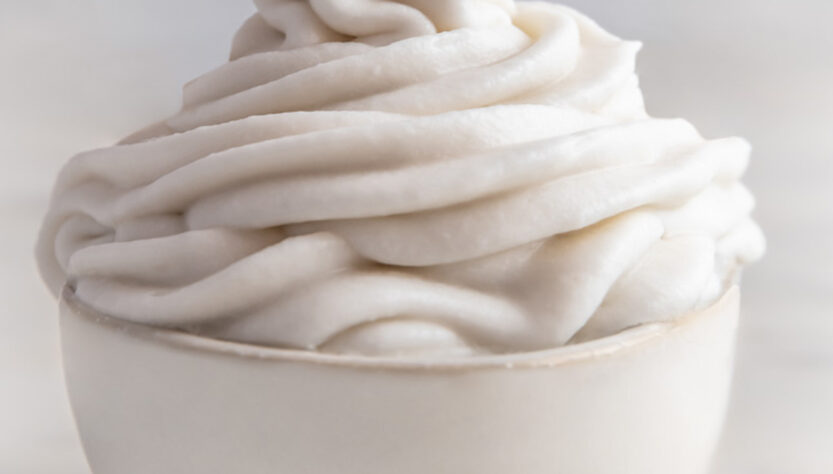
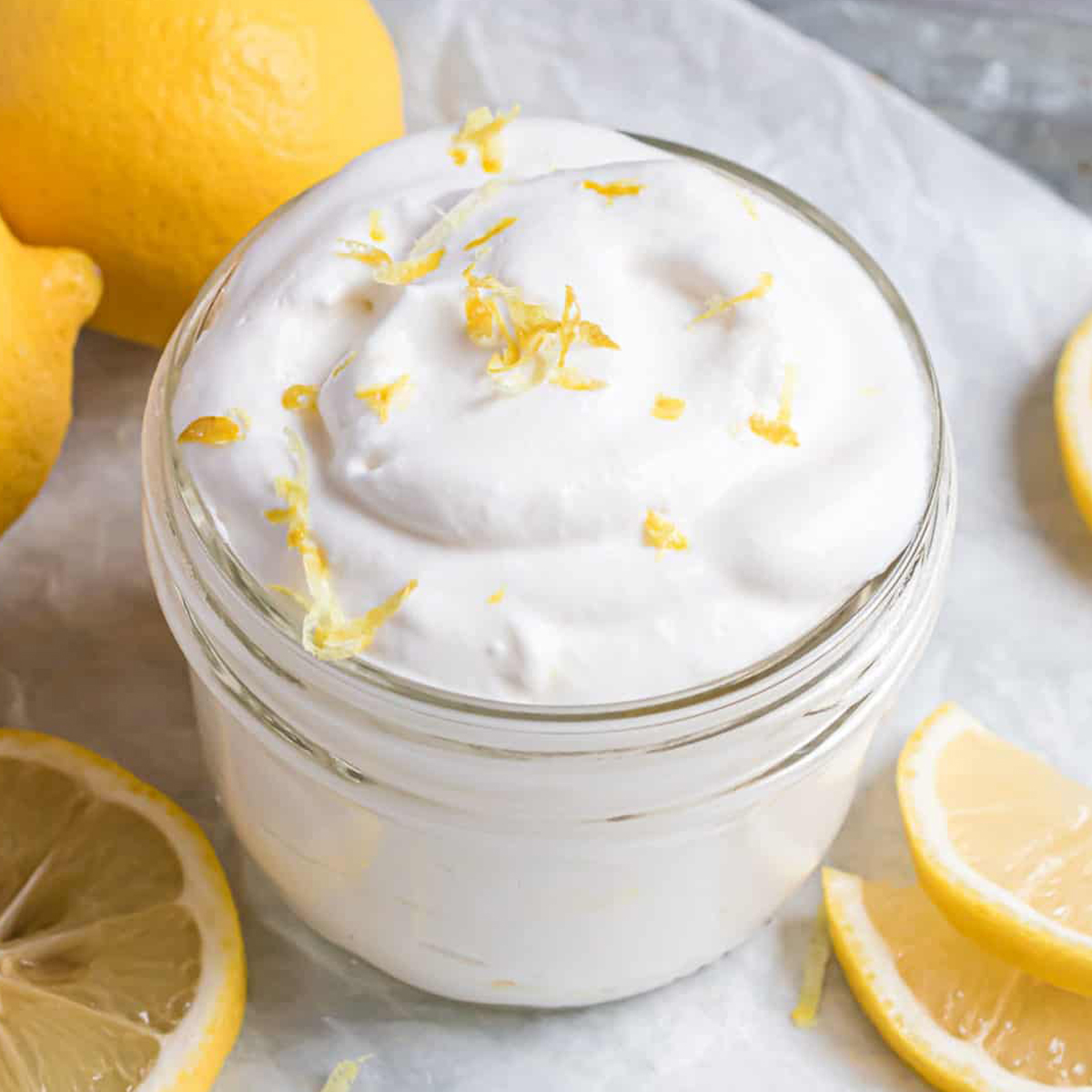
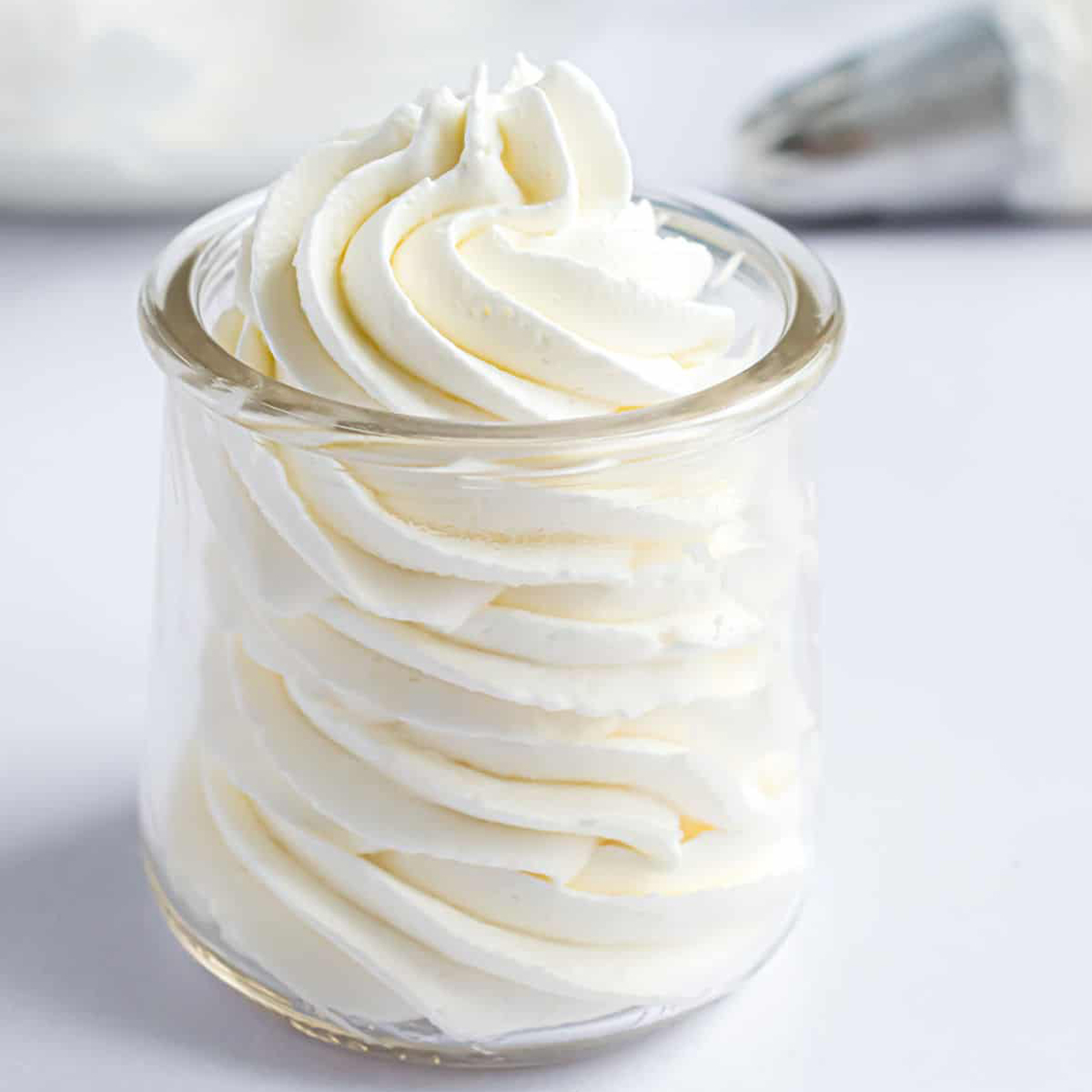


Me encanta leer sus recetas y estoy enamorada de ellas !!
Enhorabuena por encontrarlos !!